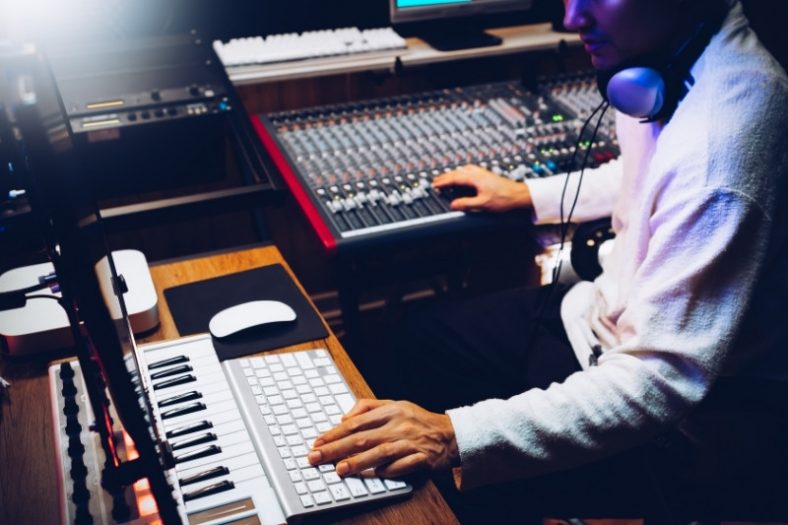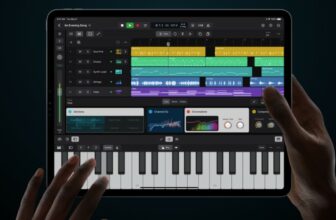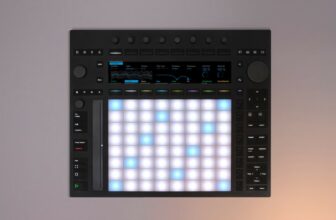How to Remix a Song – The Ultimate Guide

Producing good-quality remixes is an art form. To take a completed song and give it a new context takes a lot of creativity, know-how, and compositional skill. There are many approaches to remixing, from completely altering the structure of the original song to simply adding a new beat to an acapella vocal track.
To remix is to come up with a new musical interpretation of another artist’s song by using the song itself as the source material. Remixes are made out of recontextualized samples of the original song in combination with additional sounds, such as beats, instruments, and even vocals.
In this article, you’ll find a step-by-step guide for coming up with a great remix, as well as some useful production techniques to help with your workflow.
Before we get started, let’s go through some quick points:
Contents
Is remixing a song legal?
There’s generally nothing wrong with remixing a song just for the fun of it, but commercially-released remixes need to be authorized by artists or labels before being uploaded to Spotify or other music-streaming platforms.
To release an official remix, you should contact the author of the song you want to remix, ask for his or her permission, and—if possible—for the isolated tracks or stems used in the song. Depending on how famous the artist you want to remix is, this may not always be the best plan.
A good way to work around this limitation is to remix songs published by artists you know or have worked with. Your friends will be way more open to having their songs remixed by you than, say, The Weeknd or Dua Lipa. However, you can find numerous remixing contests online featuring tracks from major artists.
Note: we are not lawyers, so if in doubt before releasing a remix, make sure to contact one!
Are there any remixing contests available online?
You can find many remixing contests online. SKIO Music, Meta Pop, RemixComps.io, or Kreasound are always publishing new remixing contests, open to all producers willing to give it a try. Virtually all online remixing contests are authorized by the artists.
For more information on what you are legally allowed to do with a remix, please check this detailed guide on Restream’s blog.
Before focusing on the legal aspects of remixing a song, though, you should learn about the fundamentals of remixing as a music-production art form. If you have never remixed a tune before, here’s how you can stay on the right track:
1. Start with a plan
Remixing is about taking a song that already exists and using it to develop something new. Remixing is like the music producer’s version of performing a cover. The only difference is that a remix makes use of the actual performance of another artist—i.e., the actual vocal and instrument tracks that make up his or her song.
With this in mind, you should always have a plan before starting a new remix. Think about how your interpretation will add something new to a piece of music that already exists. You don’t want to change a song to the point of making it unrecognizable; that way, it would no longer be a remix. But you also don’t want to keep it extremely close to the original. After all, what would be the point of remixing then?
To come up with a great remix, start by deciding on what genre or mood you want your remix to have and work towards that goal.
Do you want to remix a quiet Taylor Swift ballad? Why not go wild and try to convert it into an EDM banger? Do you want to add a modern twist to a classic rock tune? What about speeding it up and adding a drum-and-bass beat? You can do whatever you want to if you start with a solid plan.
2. A remix will only be as good as its source material
Ideally, you should have access to a high-quality audio file of each of the tracks used in the song you want to remix. But as you can imagine, this isn’t always going to be possible, especially if you’re trying to work over a best-selling song published by a major artist.
Not having access to the individual tracks or stems of a song can be an issue, but it’s no reason to give up. Here are some of the things you can do to work around it:
Use an app to split the audio into separated instruments
There are some excellent online tools for splitting an audio file into separated instruments. While this technology’s still being perfected, it’s always a good idea to give it a try. Transcribe+ is the most complete app available, but Audionamix’s XTRAS STEMS and the no-nonsense Stems.app are also pretty decent.
Use a professional stem-division tool
Developed by iZotope, RX 9 is widely considered to be the best professional tool for dividing an audio file into stems. RX 9’s ‘Music Rebalance’ feature uses artificial intelligence to help producers to split a full song into four predefined channels of isolated tracks. You can see how it works by accessing this iZotope tutorial.
Take control with multiband dynamics and EQ
If you’re an experienced music producer who knows the way around compression and EQ, you can give it a shot at manually dividing a track into stems. By that, we mean dragging the file to your preferred DAW and using multiband dynamics and EQ to divide it into four or more sets of key frequencies.
This is by no means an easy task, but it allows you to have the control and hands-on approach you may miss when using Transcribe+ or iZotope RX 9.
3. Find the acapella
If you’re remixing a song with vocals, you should always try to find the equivalent acapella. The vocals are more than just an isolated track or stem: they’re the core of any remix, the sound that will inevitably cause people to recognize the original song that you’re remixing. Additionally, a good-quality, isolated vocal track will maximize your creative options during the remixing process.
I cannot stress enough how important it is to have access to the acapella. Vocals aren’t just the essential sound of any pop song: they’re also the one instrument that even the most skillful of producers will never be able to recreate on a DAW. But where can you find the acapella versions of your favorite songs?
Acapellas4U
The Acapellas4U website is a slice of heaven for remix lovers, containing a vast selection of popular acapella audios available for free. You can download roughly 31,000 acapella tracks from their library, including snippets from artists as disparate as The Beatles, Daft Punk, Kendrick Lamar, or Doja Cat.
YouTube
You may need to use a YouTube-to-MP3 converter for this one (which can affect audio quality), but it’s still worth a try. YouTube’s filled with enthusiastic music producers, and some have been kind enough to upload acapella tracks to the website. If you’re looking for a specific acapella you can’t find on Acapellas4U, searching YouTube is the way to go.
Go with the acoustic version
If you can’t find the acapella track you’re looking for anywhere on the Internet, here’s an alternative that can work wonders: go for the acoustic version of the song.
As a last resource measure, you can try to find a convincing acoustic cover of the song you’re working on and see how it fits with your remix.
4. Identify the BPM and key of the original song
Remixes are about changing the fundamental structure of your source-material song. But before doing so, you should learn about the song you’re working on. There are endless ways (and levels of depth) for studying a song, but the two things a good producer should always know are the BPM and key.
How to find the BPM of a song?
You can find the BPM of a song by dragging the file to your favorite DAW. DAWs such as Ableton Live will automatically identify the song’s tempo and warp it to the grid. Alternatively, you can use dj software or free tools such as SongBPM to identify a song’s tempo.
How to find the key of a song?
You can find the key of a song by playing along with it and determining its root note. You can also use your DAW’s integrated Tuner effect for spotting the chord progression used by the song. Appropriated VSTs and apps such as HoRNet SongKey MK4 and Tunebat are even easier to work with.
5. Put some great techniques to use
Now that you have a solid plan, you’ve found the appropriate source material (including a nice acapella), and you know the BPM and key of the original song, you’re finally ready to open your DAW and start working on a banging new remix. And believe it or not, this is where the real challenge begins!
To make your remixing process more fun and less frustrating, here are some tips and techniques that may help you to overcome “writer’s block” and get the juices flowing:
Create a new chord progression
Harmony is to a melody what seasoning is to food. So, what better way to give a song a different flavor than by changing its chord progression? Coming up with an alternative chord progression is one of the best ways of creating a unique remix, and there are a couple of easy ways to do so.
The most basic is to change a major chord progression to its relative minor. You can find the relative minor key of any major key by counting three semitones down the keyboard.
Let’s say, for instance, that you’re remixing a song that’s in C Major. To change it to the minor key, all you have to do is to play an A Minor chord progression. This will work because C Major and A Minor use the same seven notes. Naturally, you can also do the opposite: to find the relative major key of any minor key, just count three semitones up the keyboard.
You can also spice up a boring chord progression by converting it to a different mode of the key it’s being played at.
Once again, let’s imagine you’re remixing a song that’s in C Major. This means that you can easily play a chord progression in D Dorian (for instance) over the melody, as all modes of the C Major scale use the same seven notes. For a more detailed guide on how to approach modal harmony, please check out this comprehensive article.
If music theory is not your thing, but you still want to put a spin on the original song you’re remixing, all you have to do is transpose it.
Just select the audio files you’re working with and pitch them up or down as many semitones as you want. This can generate some drastic changes in sound, but you don’t have to worry about it as long as you’re transposing the song by three or fewer semitones.
Create new instruments by sampling the original song
One of the main challenges of remixing is to come up with sounds that fit the style of the original song. You’ll find out that it’s not always easy to seamlessly incorporate a new synth or bassline into a remix. Even if all the notes are correct, some timbres may not sit right with the original song.
To avoid these issues and come up with creative new sounds, try to design instruments based on samples of the original song.
To do so, all you need is a sampler, which is available as a stock instrument in most DAWs. Select a short sample of the original song (such as a vocal snippet or a punchy impact sound), drag it to the sampler, and play it like a keyboard. The result? You’ll have a new instrument on the spot that will fit just right with the timbre of the song you’re remixing.
For dance music remixes, focus on a short motif
Electronic dance music evolved into a pop-like style over the past few decades, but some music producers still prefer the old-school style of house and techno that used to light up the dance floor in the ’90s and ‘2000s. If you’re going for a minimal-techno remix or tech-house rework of a popular song, start by selecting an iconic motif and work around it.
This way, you will have a lot of freedom when arranging your remix, and you’ll be able to work within the loop-based structures of the genres. For these types of remixes, less is usually more: just make sure you choose the right motif—listeners should be able to identify the original song when listening to your remix.
Warp the vocals so they fit a new drum groove
The most common approach to remixing starts with the drums. In its most basic form, a remix is a new rhythmic approach to an existing song, in which the groove plays a pivotal role. But what if you take this a step forward, and adapt the main vocals to the new groove of your remix?
There’s an easy way to achieve this in Ableton Live. Open the MIDI clip containing the fundamental drum groove of your remix, right-click, and select ‘Extract Groove(s).’ Then, open the Groove Pool editor by pressing the small, wave-resembling icon underneath the Browser Content Pane; there, you’ll find the groove you’ve just extracted.
Now, you just have to drag the groove to the audio file containing the main vocals. Ableton Live will then automatically warp the vocals to the selected groove. To visualize this effect, press the button ‘Commit’ on the left side of the Sample Editor.
Slice the whole track (or entire stems)
In hip-hop, beatmakers often slice entire songs to create short snippets of sound that can be played like beats. While this is viewed as a form of sampling, it could also be considered a type of remix. In a nutshell, it’s about rearranging the source material into small blocks of sound that can be re-grooved, typically with a controller such as the legendary MPC.
To apply this technique in a remix, select either the entire original track or a stem (preferably the vocals or the main melody) and drag it into a sampler with a slice feature. In Ableton Live, Simpler is the right instrument for the purpose. Your DAW will automatically divide the audio into many playable MIDI notes, and you can use these to reshuffle the sounds of the original song into a new groove.
This technique is sometimes too radical, causing the original song to be nearly imperceptible. But if you use it lightly, it can be used to quickly generate catchy melodic motifs that sit perfectly with the timbre of the original song. It’s a lot of fun to play with as well.
Summary
No matter how much people try to convince you that everything is a remix, coming up with a good-quality remix is a particular art form and there are certain rules and guidelines to it. Your creativity is limitless, but keep in mind you’re never working alone when producing a remix: you’re also using someone else’s material, and you should treat it with care and respect.
Before trying to release a remix, pay attention to its legality and make sure you’re creating something that adds value (or at least a twist) to the original song. If you’re a music producer with one or more records out, try to incorporate a bit of your own style into your remixes. Most importantly, though, is to have fun and never be afraid to try something new!





